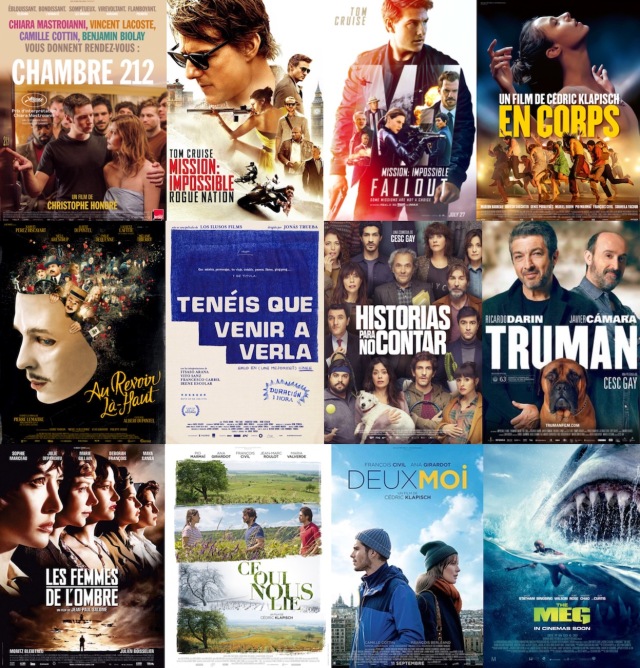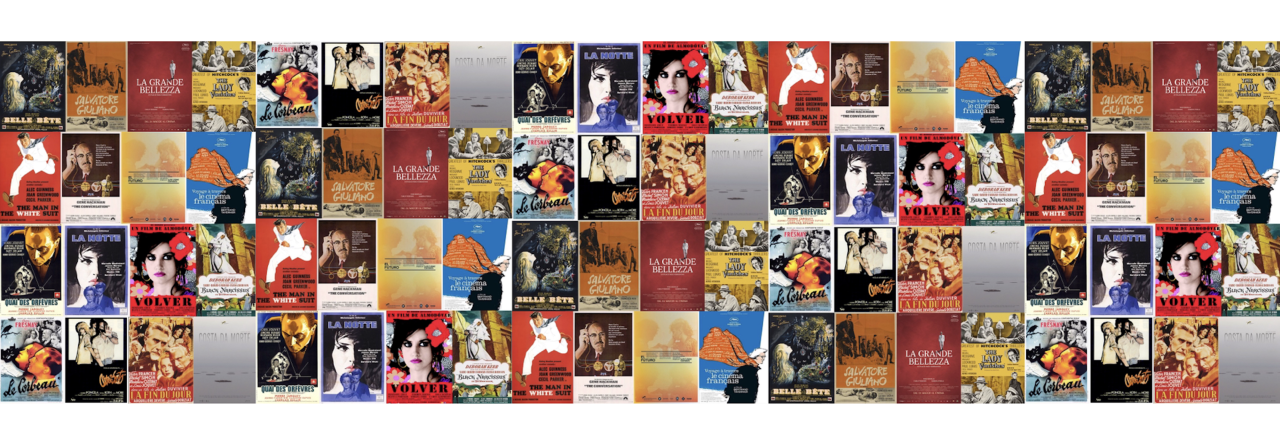
In which I go off-piste (no Tavernier-related viewing, no Ménochet, no Sorogoyen) and lose momentum.
As I said in my last post, I wasn’t expecting to maintain the viewing pace that I’d had in the previous month, and that slowing down has come to pass. There is not much rhyme or reason to what I’ve watched in the past couple of months, and I haven’t taken any notes, so there’s not going to be anything analytical in this post – I was looking for viewing that wasn’t going to require too much thought on my part. I had an initial intention of watching some recent-ish French cinema, which does account for half of the films above, but there was little method to my selection apart from my mini Cédric Klapisch-athon – which isn’t over yet because I have some of his other films lined up.
Klapisch is someone whose films I enjoy primarily for the sense of community that they usually have at their centre – his films revolve around self-made families formed out of friends, colleagues, and neighbours (and sometimes actual family members) – but also because he has a very good eye for upcoming talent (for example, L’auberge espagnole / The Spanish Apartment a.k.a. Pot Luck (2002), which was the first of his films that I encountered, was his fourth project with Romain Duris but also starred Cécile de France and Audrey Tautou early in their careers [although the latter had been in Amélie (Jean-Pierre Jeunet, 2001) the year before]). I was aware that Ce qui nous lie / Back to Burgundy (2017) and Deux Moi / Someone, Somewhere (2019) had passed me by when they were released, and was interested in the fact that he had worked with the same actors on the two films (François Civil and Ana Girardot are protagonists in both, although Pio Marmaï is ostensibly the lead in the former). In the making-of doc on the Back to Burgundy DVD, Klapisch talks about making a conscious decision to work with a younger generation of French actors, feeling that he needed a shake-up having created three films and a TV series related to L’auberge espagnole and the same set of characters/actors in the past twenty years.
But although those two films were already on my ‘to be watched’ pile, it was En corps / Rise (2022) (the French title with its dual meaning in the context of the story is infinitely better than the bland English title) that first drew my attention when I was looking for recent French films, and set off my Klapisch spree. In En corps, Marmaï and Civil are in supporting roles and real-life Paris Opéra dancer Marion Barbeau plays protagonist Elise, a ballerina whose injury during a performance puts her long-held dreams at risk but also undermines her sense of identity when she’s told that she may not dance again. I make no claims for this being groundbreaking cinema but I like the warmth of Klapisch’s films and the kindness with which he regards his characters’ foibles and shortcomings. The final stage performance in this one is very moving, not just because we know what physical expression through dance means to the character but also because of how the performance is intercut with Elise’s father (Denis Podalydès) remembering the past and effectively seeing his daughter properly for the first time. If you like dance films, or just want something heartwarming, give it a whirl (it’s available on Amazon Prime in the UK, although only with a StudioCanal subscription – I’ve bitten the bullet on that because I realised that quite a lot of the films I’d added to my Amazon Prime list as rentals are available ‘for free’ if you have that subscription, so it’s better value for money [or it is if you actually watch the films in question, which I haven’t yet]).
Of the other French films, the stand out is Au revoir là-haut / See You Up There (Albert Dupontel, 2017), which won the César awards for Best Film and Best Director in 2018. Think of a con film in the manner of The Sting (George Roy Hill, 1973) but set in France in 1919, and the con involves memorials for the war dead. Aspects of the visual style and jet black humour recall the Jeunet et Caro productions, but this visually creative film is also its own thing; the papier-mâché masks worn by Eduoard (Nahuel Pérez Biscayart, who gives a fantastic performance using mainly his eyes – he’s hidden behind a series of increasingly ornate masks for most of the film – and some elastic body language) are particularly memorable. It doesn’t entirely live up to the frenetic promise of the trailer, but it comes close. It also has a very hissable villain in Laurent Lafitte.
I watched a handful of Spanish films, of which Truman (Cesc Gay, 2015) was my favourite, mainly for the interplay between Ricardo Darín and Javier Cámara, but also the lugubrious presence of the eponymous dog. I wasn’t expecting to manage to see Tenéis que venir a verla / You Have to Come See It (Jonás Trueba, 2022) outside of a film festival setting because a) it’s only an hour long, and b) not all of Trueba’s films have made it beyond the festival circuit (I would like to see Los ilusos / Wishful Thinkers (2013) again some day, but I have come to accept that it is unlikely). But as with his previous film – La virgen de agosto / The August Virgin (2019) – there has been a French DVD release (vive la France!). That does mean the head-exploding combination of listening to Spanish while reading French subtitles, but it’s better than nothing! I really liked the opening sequence wherein the camera passes across the faces of each of the four characters individually as they listen to a live performance by Chano Dominguez; Trueba is brave enough to stick with his characters lost in contemplation, allowing the actors to convey interiority silently.
The impetus for watching the remaining films was mainly that they have sequels coming out this year. Mission: Impossible – Rogue Nation (Christopher McQuarrie, 2015) was a rewatch, but I last saw it when it was in cinemas; I needed a memory refresh before watching Mission: Impossible – Fallout (Christopher McQuarrie, 2018) because I knew that the story continued into the latter film. It’s a series of films that arguably have got better with each instalment (more polished, and more self-aware as well), although also more brutal (so I’m expecting Dead Reckoning, Parts 1 and 2 to be fairly wince-inducing). As for The Meg (Jon Turteltaub, 2018), the trailer for the upcoming sequel looks like Ben Wheatley (a left-field choice for this sort of film) is fully leaning into the absurdity of the scenario, which made me want to check out the first film…plus sometimes a rainy Sunday afternoon simply calls for Jason Statham battling a pre-historic shark.
I’m aiming to publish one of these viewing posts every couple of months, so hopefully by the time I get around to the next one I will have built up a bit of momentum again in relation to the Ménochet / Sorogoyen / As bestas thread of my viewing (and be working up to writing something about that film), and be back into the Tavernier-related films (I have actually done a fair amount of reading in connection with French cinema of the 1930s and 1940s recently, and the history of France under the Occupation, but that hasn’t translated into watching related films).

Pingback: 2023 Viewing, Part 4 – Nobody Knows Anybody